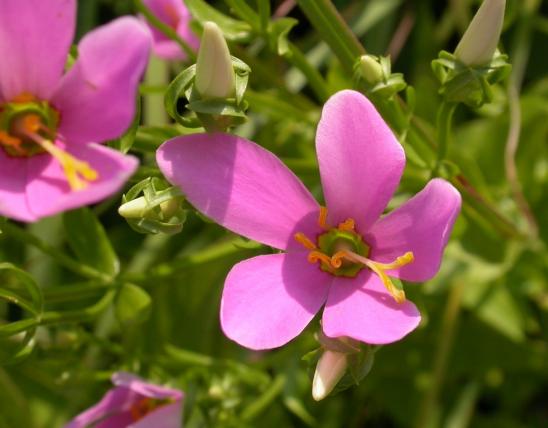
Succulent perennial with slender, naked flower stalks. Flowers in open, terminal groups, with 2 sepals shed at opening, 5 deep pink to purplish red petals, and many stamens. Flowers do not open until about noon, even on sunny days. Blooms May–August. Leaves basal, fleshy, round in cross-section, awl-like, to 2 inches long. Root a thick rhizome, like a miniature German iris root.
Similar species: Small (or prairie) fame flower (P. parviflorus) has shorter leaves, smaller flowers, and fewer stamens (usually 4–8).
Height: to 1 foot.

Generally found south of the Missouri River, but cultivated statewide.
Habitat and Conservation
Occurs in rocky glades and sandstone and chert outcroppings with acid soils. Often grows in large colonies, with plants growing out of rock crevices without apparent soil. This plant is sometimes called "flower-of-an-hour" because its flowers often don't open until the afternoon.
Human Connections
A good native plant for sunny rock gardens, but it doesn't compete well with robust, taller vegetation. Rock pink is in the same family (purslanes) as the well-known garden flower called "moss rose" or "portulaca."
Ecosystem Connections
Plants can have many adaptations that help them survive in glades and other hot, dry places. This plant has succulent leaves that store water, with a waxy outer surface that reduces water loss. The limited flowering time is also a strategy for maximizing pollination while minimizing evaporation.





























